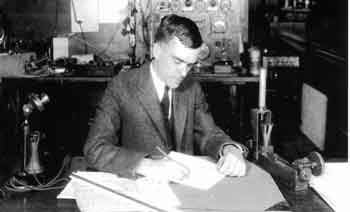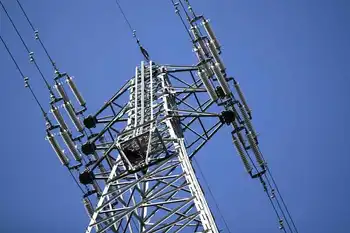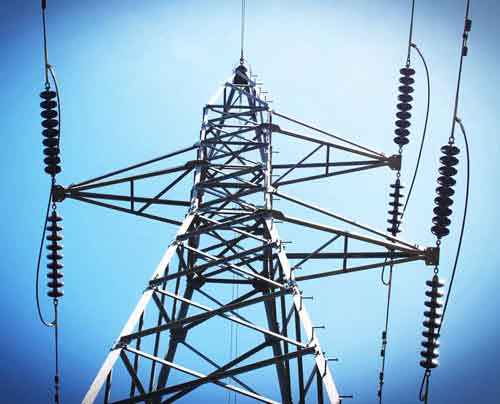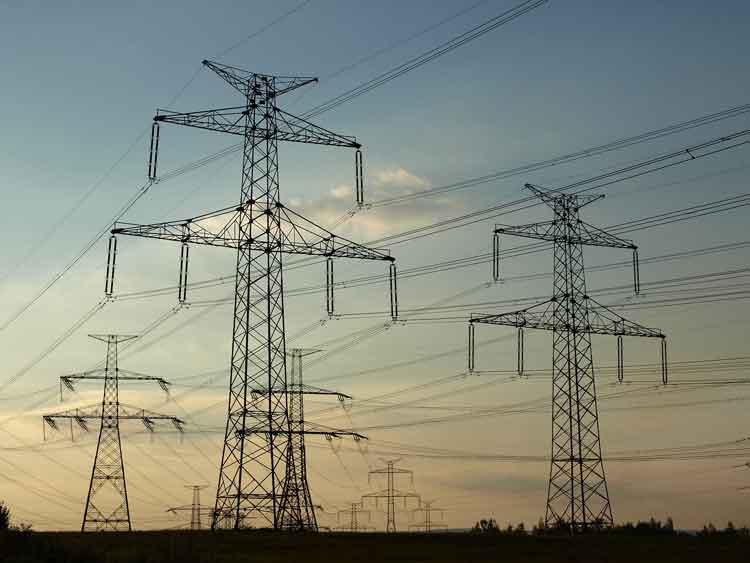TransAlta CEO transforms stodgy utility into 21st century player
By CanWest News Service
Protective Relay Training - Basic
Our customized live online or in‑person group training can be delivered to your staff at your location.

- Live Online
- 12 hours Instructor-led
- Group Training Available
In fact, he's made such an impression on people with his efforts, there isn't a bad word to be heard about the rangy redhead.
“I have a tremendous amount of respect for Steve. He's a visionary, and he's done a huge job on the homeless issue and I commend him for that,” said George Brookman, chief executive of West Canadian Industries Group and past- president and chairman of the Calgary Exhibition and Stampede.
“What I love about Steve is that he can talk to princes and paupers just the same. He talks to everyone so evenly and nicely and makes people feel great.”
Not that this should surprise anyone.
Before landing in Calgary in 1996, Snyder had been in charge of transforming Noma Industries - the Canadian company known for its lighting products - from being primarily focused on producing consumer products for the Canadian market to one with a North American focus on industrial products. Before that, the Queen's University engineer armed with an MBA from the University of Western Ontario had hung his hat at GE Canada for 14 years, toiling under the watchful eye of then-CEO Bill Blundell. There were many skeptics who greeted his arrival at TransAlta; what did someone coming from running a consumer-focused lighting company know about power generation?
Plenty, it turns out.
Since signing on at TransAlta, which marks its 100th birthday this year, Snyder has been instrumental in taking what was viewed as a stodgy utility to one that is leading the charge on what is set to be a step change in the world of power generation.
From moving into the U.S. through the purchase of the Centralia plant in Washington State, to being an early advocate of wind power and understanding the need to buy carbon offsets, Snyder has kept his focus firmly on the horizon, even though the market hasn't exactly rewarded his efforts. TransAlta's shares have had quite the round trip in the last decade - going from $21.13 in April 1999, rising as high as $37 but now trading in the $19 range.
These days, he is a passionate advocate for carbon capture and storage technology as being one of the key technological developments to lower carbon dioxide emissions, a key issue for Alberta oilsands producers.
Snyder chaired the joint federal and provincial task force looking into carbon capture and storage, which submitted its recommendations in February 2008. The Alberta government has since committed $2 billion to CCS initiatives in the province - moving ahead with funding the initiative despite the current economic slowdown. Even so, Snyder is the first to admit that CCS isn't the silver bullet many are hoping it to be. “It's part of the solution that will also include nuclear and other renewable options,” he said in his office, festooned with pictures of his family.
The issue, of course, is cost. Snyder points out that coal remains the fuel of choice for electricity generation because of its cost.
“We have moved from being a society where 15 years ago it was all about cheap electricity. Today the environmental concerns are moving the cost upwards,” he said.
But, Snyder points out, the capital requirements of CCS are still below what it would cost to build nuclear or large-scale renewable facilities and that's why he is a firm believer that this option needs to be pursued.
Asked about a move to shift coal-fired plants to natural gas, which has half the emissions of coal, Snyder quickly runs through the challenges.
“The issue comes back to cost and security of supply for natural gas, not to mention a time frame of between seven and eight years to break even. At $4 per thousand cubic feet, it works out to $50 per megawatt hour, but if the price rises to $10 per mcf, then you're looking at a cost of $120/MGW,” says Snyder.
The attractiveness of the CCS option, from his perspective, is that it has the potential to be cost-effectively applied on a global basis. Because power consumption goes up as GDP rises around the world, Synder says it is critical that the technology becomes accessible in the developing world as well as the developed world.
For its part, TransAlta is currently involved in what it calls Project Pioneer, where it is working on a chilled ammonia process to capture carbon dioxide from one of its Alberta-based plants.
The company is also waiting to see if it will be one of between three and five projects funded by the provincial government - although it did receive a portion of the $140 million recently doled out by the federal government for its Keephills plant outside Edmonton. The project will remove one megatonne per year of carbon dioxide.
If the elephant currently in the room is the environment, the one that just left was the failed proxy battle by a New York-based hedge fund Luminus LLC. Luminus bought shares in TransAlta when rumours were flying in 2007 that the company was going to be picked off by a private-equity fund.
Needless to say, that didn't happen, but the hedge fund was convinced TransAlta wasn't being managed as aggressively as it could have been and wanted to increase the debt on the balance sheet, buy back shares and jettison some assets.
In late 2007 Luminus embarked on a campaign that included a plan to add as much as $2 billion in debt to TransAlta's balance sheet, along with selling some assets. This was followed up with a letter sent to the board of directors in July 2008 saying it was prepared to offer $39 cash per share and move toward a ‘negotiated settlement.’ The so-called ‘offer’ was withdrawn in October with TransAlta successfully defying the investment-banking adage of ‘once in play, always in play.’
“He did a very good job stickhandling the Luminus situation, which was very awkward... he is a consensus builder and very good at resolving issues,'' said Michael Tims, chairman of investment counsel Peters & Co.
While Snyder isn't the kind of guy to gloat, there's no denying he's pleased that TransAlta's conservative approach has positioned the company to take advantage of opportunities - most likely in small-scale hydro or cogeneration - that are likely to arise in the current environment.
“Cash is king... we have always had that as a key objective and we have always made sure never to have a large amount of debt coming due,” he said.
One of the benefits from the Luminus episode, says Snyder, is that it put into play one of TransAlta's `stress test' scenarios in terms of the company's strategic plan and supporting assumptions.
“The stress test turned into the real world... we still think the model works and this is where we are today,” he said. It also forced TransAlta to do a better job at communicating.
“We have a better understanding of what to tell shareholders... we are giving them better information - and more succinctly - than we were two years ago,” he said. Inasmuch as the challenges with Luminus occupied a significant amount of time for the better part of 2008, it didn't mean Snyder dropped out of site in terms of his charitable endeavours in the community.
For Snyder, the notion of being active in one's community is not an option: no matter who you are, or how busy you are, you have an obligation to give back. And Snyder has done that in spades.
He says it started at GE Canada, which has a philosophy that all leaders should be engaged outside the corporation because it ``rounds people out.''
His journey to philanthropy began through the United Way in Toronto while working at GE, where he became involved in the industrial division of the campaign. He was also involved in the Council for Canadian Unity while in Toronto, an experience he calls an eye opener for the diversity of opinions, political stripes and skill sets that were gathered around the table, all working toward one goal: national unity.
The rest, as they say, is history. When he came to Calgary, Ruth Ramsden-Wood tapped him on the shoulder and in 2004, Snyder co-chaired the United Way Campaign, helping raise $37.8 million - up from $32.4 million in the prior year.
He has also served on the Stampede Board and currently chairs the Calgary Stampede Foundation, but Snyder arguably took on his biggest challenge in January 2007, when he agreed to chair the Calgary Committee to End Homelessness.
“He was able to bring together a very diverse group of business people from the Calgary business community and as a result of his great reputation and leadership skills we worked very well together as a diverse team and accomplished a lot in what was really a relatively short period of time. Steve's leadership capabilities... are a big part of why we made so much progress in such a short period of time,'' said Sam Kolias, chairman and chief executive of Boardwalk Equities REIT.
The committee, which tabled its report one year later, spawned the creation of the Alberta Secretariat for Action on Homelessness at the provincial level, which Snyder is now chairman.
Last November, Snyder was honoured by the Conference Board of Canada, on which he serves as a board member, as an Honorary Associate. This recognizes an individual “who has served Canada and their organization with distinction during an outstanding career.”
The sold-out awards dinner took place at the Hyatt Hotel, where attendees learned a bit more about Snyder through his remarks, and those of his children.
The audience discovered that the rangy redhead sporting a pair of fashion forward specs - who turns 60 on later this month but still doesn't look much past 45 - can be self-deprecating. “I hope I have added some value (to the Conference Board),” he says. The audience also discovered he is a big fan of the Swedish pop group, ABBA.
And with that, his one apparent shortcoming is revealed.
Still, all kidding aside, it's not often one finds a business leader in the community for whom there is not an ill word spoken. Snyder's ability to dive into the meat of contentious issues, his unfailing optimism and inability to say no when his time and advice are needed have indeed made a difference not just in Calgary, but across the country.















